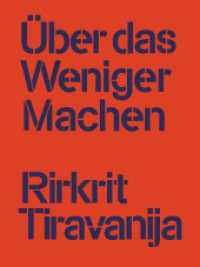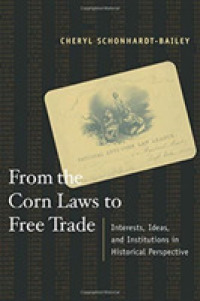- ホーム
- > 洋書
- > 英文書
- > Business / Economics
基本説明
The sixteen articles in this collection analyse the contribution made by overseas trade, and the wealth in coin which it created, to the development of the English economy and locate this in an European-wide setting. In time, they range from the late Anglo-Saxon period up to the advent of the Tudors.
Full Description
The sixteen articles in this collection analyse the contribution made by overseas trade, and the wealth in coin which it created, to the development of the English economy and locate this in an European-wide setting. In time, they range from the late Anglo-Saxon period up to the advent of the Tudors. The papers include general surveys of the importance of coinage and credit in the rise and decline of a market economy, and of the way that credit functioned in a society that lacked reliable supplies of bullion and which was also subject to the scourges of warfare and devastating disease. They illustrate, too, how from the tenth century the English crown used its control and exploitation of the coinage as part of a sophisticated fiscal system which helped create the precocious power of the English state. The author further shows how the wool trade altered the geographical pattern of wealth and enriched peasants, landowners and merchants, while the competing interests involved in the trade also cause political conflicts in Parliament and in the government of London during the period when London was establishing itself as the political capital and the financial centre of the kingdom.
Contents
Contents: Introduction; Communication through capital and trade: money and the rise of a market economy in medieval Europe; The ora, the mark, and the mancus: weight-standards and the coinage in 11th-century England (parts 1 & 2); The evolution of weight standards and the creation of new monetary and commercial links in Northern Europe from the 10th century to the 12th century; Some London moneyers, and reflections on the organisation of English Mints in the 11th and 12th centuries; The origin of the Court of Husting and Danish influence on London's development into a capital city; 'The king's profit': trends in English Mint and monetary policy in the 11th and 12th centuries; The London Pepperers' Guild and some 12th-century English trading links with Spain; The lay subsidies and the distribution of wealth in medieval England, 1275-1334; Norwich, London, and the regional integration of Norfolk's economy in the first half of the 14th century; The English parochial clergy as investors and creditors in the first half of the 14th century; Knights and merchants: trade, politics, and the gentry in late medieval England; The growth of London in the medieval English economy; Capitalists, crafts, and constitutional change in late 14th-century London; Money and credit in the economy of late medieval England; Monetary contraction and mercantile credit in later medieval England; England and the European depression of the mid-15th century; Index.






